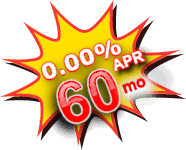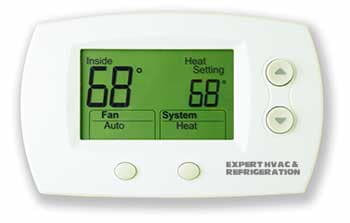Usually we blog about the dangers related to your heating and cooling system, but with the holidays upon us, we want to provide you with advice to keep your family safe from the hazards of Christmas time. For the best advice, Expert HVAC and Refrigeration’s blog turns to This Old House. They write:
Keep the “happy” in “happy holidays” by making sure your don’t fall victim to these common (but preventable) Christmas dangers.
We don’t mean to be kill-joys during the most joyous time of the year, but the stats don’t lie: According to the U.S. Consumer Product Safety Commission, over 12,500 of you have to leave the company of your loved ones to rush to the emergency room due to holiday-related accidental injuries. Here are some common holiday dangers that are overlooked by distracted holiday revelers more often than you might think. Take a look, know the warning signs, and you’ll be the first to know if you, your loved ones, or your pets are victims of a toxic Christmas.
1. Christmas Tree Mold
If your sniffling and sneezing coincide with the arrival of your freshly cut Christmas tree, you could be reacting to skyrocketing mold spore counts. If you must have a real tree in your home, prevent allergic reactions for guests and loved ones by hosing your tree down, spraying it with a mold-resistant sealant like M-1 Sure Cote, and allowing it to dry before bringing it indoors.
Mold spore counts might be lower with living trees, and lower still with artificial trees. But, keep in mind that some mold can grow on living trees in nature and that dust accumulates while artificial trees are in storage. Also, ask growers about the pollination behavior of your tree: Mountain cedar trees pollinate in late November to early December, so allergy sufferers should steer clear of that variety. Allergy sufferers should consider wearing an allergy relief mask while decorating and keeping an air purifier in the room of the display.
2. Chocolate-Loving Dogs
If you’re baking this holiday, keep your ingredients stored in a high cabinet and not anyplace where your pup could get to them. Theobromine, a compound present in chocolate that is toxic to dogs but not humans, could cause a range of symptoms, including vomiting and diarrhea, seizures, coma, or even death. Potential toxic doses vary by breed size and weight, but unsweetened cocoa and baking chocolate pose the highest risk, while milk chocolate is least threatening. If you suspect your pet has ingested a toxic amount of chocolate, call your veterinarian or the ASPCA Animal Poison Control Center at 888-426-4435.
3. The Leftovers
Pups begging at the table for scraps isn’t anything new. But, make sure guests know what they can and can’t offer your pet. It’s best practice not to train animals into a taste for human foods at all; your dog can chew common treats like chicken and turkey bones into shards that can pose a choking hazard if swallowed.
Be sure to take your trash out regularly to avoid pets rummaging through it and discovering scraps that could put them in danger: coffee grinds (methylxanthines can cause vomiting and diarrhea, seizures, and even death), grapes and raisins (an unknown compound causes kidney failure), and more. For a full list of People Foods to Avoid Feeding Your Pet visit aspca.org
4. Not So Merry Medicine
Grandpa, Grandma, and other overnight guests may be traveling with medication. You can monitor and properly store your own prescriptions but when guests come, they may leave theirs on guest room nightstands and bathroom vanities, right in reach of the little ones.
Designate a secure area or tray on a high dresser for guests to lay out their pill boxes and bottles. Give guests a special place to put their pocketbooks and bags (which may also contain pills and other medications) that is inaccessible to children, too.
5. Snow Shoveling
It’s important to keep walkways clear of snow and ice to prevent injury from slips and falls. But, it’s just as important to make sure you’re shoveling correctly so as not to hurt yourself. Avoid pulling your back by bending at the knees, keeping your back straight, tightening your stomach muscles, and lifting with your legs. See more Digging Do’s and Dont’s from TOHlandscape contractor Roger Cook to make sure you make it through the holidays with your back intact.
6. Wrap Rage
A large percentage of holiday-related emergency room visits are a result of attempts to open difficult product packaging, such as clamshells and shrink-wrapped goods. When opening packages you want to make sure that your hands—and whatever is inside the impenetrable container—make it through the process unscathed. If you’re using scissors, cut with blades facing away from your body and hands, but you could also try a specialty tool to get things opened in a snap. Our favorite is the Plastic Surgeon which features a long ergonomic handle and a stay-sharp surgical steel blade with auto-close safety cover. Another option is to shop vendors who provide easy-open packaging (shown here); there are more and more of them as wrap rage frustration and injuries increase year over year.
7. High-Strung Lights
Every year, more than 500,000 people are injured as a result of falling off of ladders. If you’re hanging holiday lights this year, don’t do it alone; a pair of helping hands goes a long way to ensuring your safety. Make sure your ladder is level, don’t overreach, and don’t ascend the ladder with your hands full. Also, as marked on many models, do not step on the two uppermost treads. Close ladders when they’re not in use to avoid having kids venture upward without supervision. You might also consider accessories like ladder jacks and levelers for added safety.
8. Toppling Trees and Ominous Ornaments
As we’ve discussed in How to Kid-Proof Your Holiday Decor, trees should be placed in a sturdy stand rated for the tree’s size and positioned in a low-traffic area, where pets and kids won’t pose a tip-over risk. Meanwhile, when decorating avoid real or artificial candy and popcorn: They’ll lure kids to tug at the tree and pose choking hazards if children take a bite. Trees are involved in hundreds of fires every holiday season; keep reading for ways you can lower the risk in your home.
9. A Cozy Fire
Tossing wrapping paper into the fireplace may seem harmless enough, but doing so poses a flash fire risk. Split hardwood is the best thing to burn, and make sure your chimney is swept and fireplace is maintained before you light it up. Never light candles—responsible for tens of thousands of fires every year—near your holiday tree or where pets and kids may be playing; an open flame near a dry tree (indicated by the shedding of excessive needles) is a major holiday fire hazard.
To that end, keep your tree away from any heat sources, like radiators and fireplaces, which will expedite the drying process. In fact, consider adding glass fireplace doors for a measure of safety. Cutting away a sliver from the bottom of your new tree’s trunk will allow it to absorb more moisture and slow drying time. If holiday distractions mean tree-watering will slip your mind, consider investing in a reusable artificial tree or try an automatic watering system like the Quench-A-Tree, which looks like a wrapped gift.
10. Strings of Colorful Lights
Always inspect lights before you hang and plug them in. Check for frayed wires, broken bulbs and sockets, and loose connections—those problems indicate fire and electrocution hazards. Keep in mind that the larger a bulb is, the more heat it’ll drive, so inspect surfaces after your first light up to monitor for possible damage to gutters. Lead is present in many Christmas light strings; do your homework and read packages carefully to determine the right set of lights for your home.
Regardless of your preferences (colored, uncolored, large bulbs, or small) make sure the box you pick up has a UL seal on it. UL-certified products have undergone testing for durability and safety. Finally, use as few power cords as possible to prevent overloading and only use lights marked for outdoor use in your exterior lighting displays. When you’re not enjoying your beautiful sparklers, be sure to unplug.


